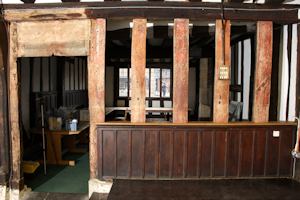

In 1892, during restoration work led by the Revd de Courcy Laffan, partitions and plastering were removed from the lower Guildhall by Messrs Arthur S. and Edgar Flower, paid for by Mr Charles Flower (Bloom 1903; Watkins 1953). These revealed partial evidence of the original decorative scheme of the Guildhall chapel. The vertical studs of the east wall separating the chapel from the council chamber, were painted red, and decorated with stencilled motifs, including stylised roses (Figure 19). The south wall was recognised as having effectively functioned as a reredos for the altar (Figure 20). The painting depicted what was interpreted as a Crucifixion, by the Antiquarians Baker (1902, 63) and Bailey (1898) (Figure 21). Parallels with the Holy Cross guild's 15th-century seal (Figure 22) suggested that a central figure of Christ was flanked by the Virgin Mary (to the right) and St John the Baptist (to the left). On the left of the image, Watkins (1953, 38) identified the royal coat of arms (England quartered with France) and on the right those of the Despencer family (possibly those of Henry Beauchamp, Duke of Warwick, who died in 1445). The paintings appear to have been 'protected' in 1892 by a glazed screen fixed permanently to the wall.


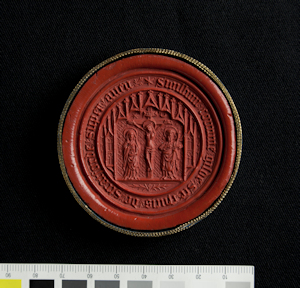
In 2004 an initial condition assessment and sampling of the paintings was undertaken by the conservator, Jane Rutherfoord (2004). This yielded evidence of vermillion, red lead, white lead, red lake, indigo, a copper-based green, chalk, several carbon-based black pigments as well as several earth pigments used in the scheme. The binding medium was probably oil and some traces of gold leaf on oil mordant were also present. The quality of the pigments and artistry in the Guildhall chapel perhaps reflects the presence in Warwickshire of some of the most talented painters of the day (Davidson and Alexander 1985). The Masters and Proctors accounts for 1427/8 (SCLA BRT/1/3/38) record payments to 'Thomas Payntour' and his son 'for his colours', including red lead, 'vermylon', 'ynde bawdyat', white lead, 'zalow', and for 'oyle and cole'. It is very rare to find references to medieval painters, but it is possible that Thomas Payntour was the artist responsible for the Guildhall chapel images as well as those in the Guild Chapel.
Two reports produced prior to and in the early stages of conservation work by Lithgow and Perry (2013; 2014) revealed much more extensive evidence of the paintings on the east and south walls, partly as a consequence of an extensive programme of digital documentation (Figures 24-27). Conservation work was undertaken by Mark Perry and Richard Lithgow between January-March 2016, at the same time as the University of York team were working on the reconstruction drawing. This very tight timetable was partly driven by the need to wait until conservation work elsewhere in the Guildhall had been completed, but also by the desire to re-open the building in April 2016, as part of the commemorations of the 600th anniversary of Shakespeare's death. Conventionally, the commissioning of a reconstruction drawing normally follows the completion of conservation work. However, as noted earlier, this can result in the separation and exclusion of conservation experts from analytical and interpretative processes. Thus, although the timetable of the project created some challenges, it also encouraged daily email dialogue within and between members of the project team. As part of this dialogue, a compelling case was made to Historic England Inspector, Nick Molyneux, to remove some of the plain red and yellow water-soluble paint from designated areas of the vertical timbers of the south wall in order to reveal underlying details. This action completely transformed understanding of the original and later decorative schemes in the Guildhall chapel.
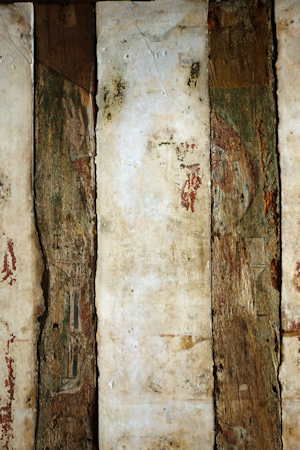
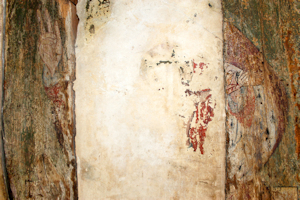
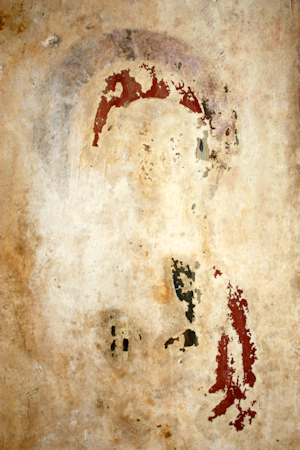
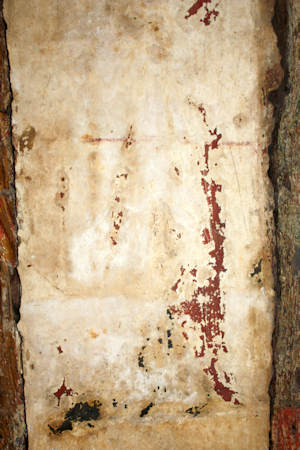
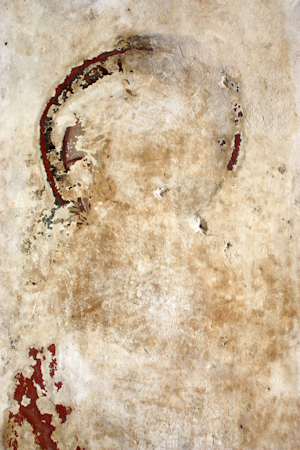
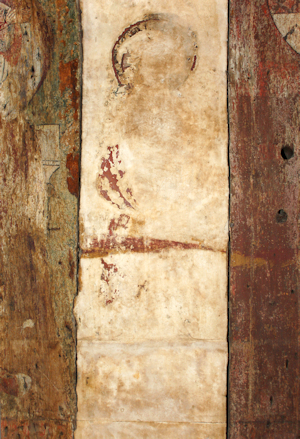
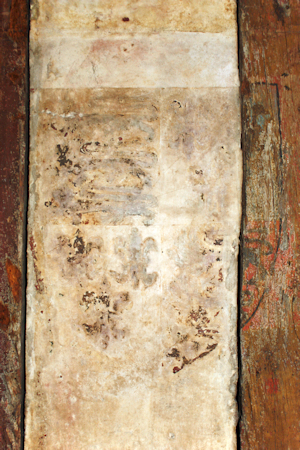
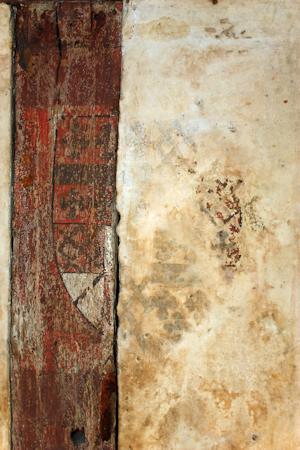
Internet Archaeology is an open access journal based in the Department of Archaeology, University of York. Except where otherwise noted, content from this work may be used under the terms of the Creative Commons Attribution 3.0 (CC BY) Unported licence, which permits unrestricted use, distribution, and reproduction in any medium, provided that attribution to the author(s), the title of the work, the Internet Archaeology journal and the relevant URL/DOI are given.
Terms and Conditions | Legal Statements | Privacy Policy | Cookies Policy | Citing Internet Archaeology
Internet Archaeology content is preserved for the long term with the Archaeology Data Service. Help sustain and support open access publication by donating to our Open Access Archaeology Fund.